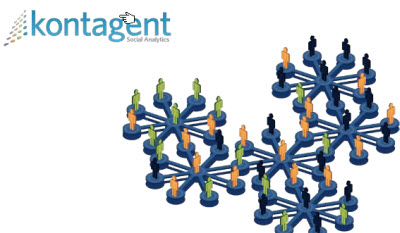社交游戏峰会:Albert Lai提社交游戏测量的7个准则
知名社交游戏平台公司Kontagent的创办者兼首席执行官Albert Lai最近在东部社交游戏峰会上发表了他的7大社交游戏测量公式。他的发言中包含了许多游戏开发商理所应懂的几大社交游戏领域常用测量公式。
1,客户撷取成本(CAC)
近几年来,社交游戏的CAC一直呈上升趋势,现价大约在1到4美元之间。这主要是由于现在许多大品牌社交游戏也开始采用广告宣传,迫使小游戏开发商提高对Facebook广告投入。对于Albert Lai来讲,玩家流量的关键因素、留存时间、单一用户的平均月贡献以及CPM/CPC/CPI等等都相当重要,因此就需要开发者进行A/B测试或者多变量测试。
2,增值指数(病毒式扩张循环)
目前社交游戏领域的增值指数平均下滑至0.3,也就是说游戏每吸引1位新用户,只有0.3人会确实登录游戏。
3,用户登录次数 和 平均游戏时长
社交游戏开发商应如何提升玩家登录游戏的频率,如何延长玩家每次游戏的时长?答案是对游戏设计进行根本性重塑。Albert Lai表示,Kontagent中大部分成功应用的每日每用户平均登录次数为1.7到2.2次,平均游戏时长为10分钟以上。
4,1天黏着度和1周黏着度
一般来说,社交游戏的1天黏着度和1周黏着度基本相当,在25%到35%之间。1天黏着度是指将新用户在首次体验游戏后1天内再次登录游戏的概率,而1周黏着度则是新玩家在首次体验游戏后第2周再登录游戏的频率。
5,每用户平均游戏寿命
随着社交游戏开发商越来越注重提高游戏的黏着度,玩家的每用户平均游戏寿命就呈现上升趋势。然而,不同游戏的每用户平均游戏寿命有所不同。首先要确保社交游戏开发商要确保游戏具有一定的“engagement loop”,即了解玩家的游戏心态,通过游戏机制促进玩家的互动,并令玩家在离开游戏时仍对游戏持有兴趣。
6,ARPU和ARPPU(每用户平均收入和每付费用户平均消费)
随着各大社交游戏公司对虚拟商品商业模式的了解日趋深入,ARPU和ARPPU两大数值数值也呈现上升趋势。通过计算“营收/DAU,交易数/DAU及收益/交易量”等,ARPU一般为0.01至0.05美元;ARPPU为2到10美元。
7,付费玩家百分比
社交游戏是一种免费游戏的经济模式,由于产品开发和客户撷取成本不断提高,各大社交游戏开发公司必须拥有尽量高的付费玩家百分比。其中,社交游戏玩家的年龄结构正式决定这一百分比的关键因素。目前在社交游戏领域,付费玩家一般仅占总玩家人数的1%到3%。
K-LTV:每用户社交网站使用价值
玩家是产生游戏收入的基本单位。玩家本身就是病毒式传播的渠道之一,每位玩家通过介绍其他朋友加入游戏产生了多少二手交易,为社交游戏创造了多少营收?这也正式意图通过流量资源盈利的社交游戏开发商必须考虑的关键因素之一。(本文由游戏邦/gamerboom.com 转载请注明:游戏邦)
Albert Lai, CEO and founder of Kontagent, a leading metrics platform for social games, presented the 7 deadly social metrics at the New Yorker Hotel for Social Gaming Summit East. The presentation included a interesting insights into the key metrics that every game developer should be tracking.
1. Customer Acquisition Cost
The CAC is trending upwards and is a current state of $1 to $4. The reason for this is that big brands are entering the advertising ecosystem, and driving up the cost for small developers to buy ads in the Facebook ecosystem. To look at this, Albert looks at the traffic k-factor, the traffic x-day retention, the traffic ARPU and the CPM/CPC/CPI. To test this, you need to do A/B testing and more.
2. K-Factor (The Viral Loop)
The overall K-Factor has dropped to 0.3, on average. And this means that for every user entering the game, there are 0.3 new users signing up for the game (or that for every 3 new users, you’re getting one more new user). Albert clarified that this is a critical element to consider within your social application or game.
Don’t just A/B test the landing page, the game play and text, but A/B test the timing of offers and viral requests for sharing. Albert emphasized that hitting the user when they are fully engaged is something that is typically glossed over, and shouldn’t be.
3. Sessions/User & Avg. Session Length.
Do you want to drive frequency of visits or length per visit? These are answers that will fundamentally change your game design. We’re seeing 10+ minutes per session and 1.7-2.2 sessions/user/day in the most successful Kontagent applications.
4. 1 Day + 1 Week Retention
Day 1 and Week 1 retention are actually similar, with 25% to 35% retention. Enhance this using A/B Test game mechanics. The one day is cohorting all new users that come back to your user within one day of playing the game for the first time. The week-over-week retention is looking at how many will come back in week 2.
5. Average Lifetime Per User
This is trending upwards, as customers are far more focused on retention than before. It varies significantly between games. Ensure that you have an engagement loop, the understands the user’s psychology as they enter the game, interact with game mechanics, and leave the game with a reminder to play again. Focus on the loop, according to Albert.
6. ARPU, ARPPU (Average Revenue Per User, Average Revenue Per Paying Users)
Trending upwards as companies learn more about virtual goods models. The ARPPU: $2-$10 and ARPU: $0.01 – $0.05. Measured through Revenue/DAU, Transactions/DAU and $/Transactions. Albert mentioned that Facebook Credits have reduced friction and definitely increased the key measures above.
This is a key factor that can be tweaked, and it’s important that game developers create a solid model that complements the engagement loop to understand and tweak your ARPU and ARPPU.
7. Percentage of Paying Users
The economics of social games are becoming more like a free to play game. Production and acquisition costs are higher, and it forces developers to get a higher percentage of paying users. The demographics of users is key to fine tune the traffic source you’re acquiring. The typical percentage is 1 to 3% of total users.
Finally, Albert introduced his catch all metric that he uses to understand a user.
K-LTV: Social Network Lifetime Value Per User (Viral Life Time Value)
The user is a revenue generating unit which a full lifecycle. The user is a viral recruiter, and how much are they making for the company in the second order as they recommend the game to friends.
This is a key factor to developers that are attempting to profit from traffic sources by understanding how much to bid for that traffic. (Source:Social times)








































 闽公网安备35020302001549号
闽公网安备35020302001549号